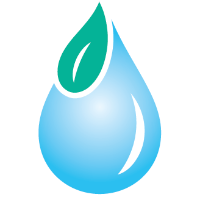Water for Food Global Institute, Daugherty

Daugherty Water for Food Global Institute: Faculty Publications
Date of this Version
1-2019
Document Type
Article
Citation
This report is available online at waterforfood.nebraska.edu
Abstract
Irrigation for agricultural production represents the largest consumptive use of water in the western United States. Understanding the ways in which agricultural producers respond to physical and institutional water scarcity is therefore key to managing water risk. One of the important risk management tools available to agricultural producers is the ability to transfer water across space and time. Water transfers range from very informal handshake agreements between neighbors to very formal transfers of real property across large distances with mandatory state and federal reporting. Given the range of potential water transfer mechanisms, there are significant knowledge gaps on the variety, scale, and scope of agricultural water transfers. The goal of this report is to improve understanding of the state of water transfers between agricultural producers in the American West. It is intended for a broad range of practitioners including water district managers and board members, commodity groups, individual agricultural producers, policymakers, researchers, and others interested in gaining insights into how the agricultural sector currently reallocates water, and challenges and opportunities for improving water reallocation. This report was informed by interviews with dozens of water practitioners. Common themes emerging from the interviews include: • Water transfers between agricultural producers are widespread in the American West, implying that these transfers provide value and risk management • Most water transfers seem to be informal and occur at a local, within-water district level • Data collection about transfers is limited and the terminology used is localized and variable: often water transfer participants do not self-identify as undertaking water transfers • Well-defined property rights with strong enforcement encourage water transfer activity In addition to synthesizing key practices and results, the report provides examples of many different kinds of water transfers and supporting mechanisms that are in operation across the western United States.
A key objective of this report is to improve understanding of the variety of informal and formal water transfers occurring for agricultural production, to describe the transfer processes and considerations for managers and decision makers considering new transfer programs, and to discuss challenges and opportunities both to scale transfers and to improve data collection. Water transfers between agricultural producers are widespread in the Western United States, implying that such transfers provide both value and risk management to voluntary participants. Most water transfers seem to be informal and occur at a local, within-water district level. Current data collection about transfers is limited and some common types of transfers generate no recordkeeping at all. Moreover, the terminology used for transfers is localized and variable: often water transfer participants do not self-identify as undertaking water transfers. The analysis highlighted the potential benefit of sharing clear information about potential transfer types and their applicability, as well as the need to emphasize the role of well-defined property rights with strong enforcement in building trust for water transfer activities.
Included in
Environmental Health and Protection Commons, Environmental Monitoring Commons, Hydraulic Engineering Commons, Hydrology Commons, Natural Resource Economics Commons, Natural Resources and Conservation Commons, Natural Resources Management and Policy Commons, Sustainability Commons, Water Resource Management Commons


Comments
©2019 Daugherty Water for Food Global Institute and Mammoth Trading